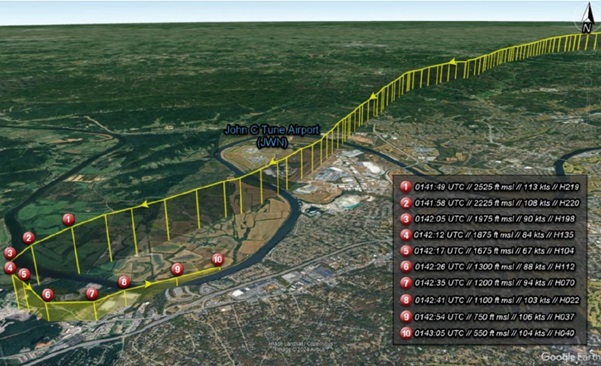Watching isn't seeing
What you expect might not be what you get
Flight—like most activities that require manipulating the laws of physics—relies on the acquisition and processing of factual information. Unfortunately, human beings aren’t innately reliable at distinguishing fact from belief from outright error.
Certain types of misinterpretation occur so frequently in aviation contexts that their names have become catchphrases. “Confirmation bias,” the tendency to believe information that corroborates your preferences but discredit data that challenges them, often figures into the faulty preflight planning that leads to weather accidents. “Expectation bias,” the tendency to see or hear what you were told (or told yourself) to expect rather than what’s actually happened, is frequently cited in wrong-runway and even wrong-airport landings. When that bias affects more than one of the people involved, the consequences can be much less benign.
Early in the evening of Aug. 21, 2014, a Cessna 421C being operated as an air ambulance arrived at Las Cruces, New Mexico, to transport a cancer patient undergoing treatment in Phoenix. After loading the patient and taking on 40 gallons of fuel, the flight took off shortly before 7 p.m. Its IFR flight plan listed an expected flight time of one hour, 20 minutes with three hours of fuel on board. At 7:01:45 p.m., the flight paramedic contacted the company’s base of operations by satellite phone to report that they were turning back “for unknown smoke to the right engine” and expected to be on the ground in five to seven minutes.
Two of the three witnesses who saw the twin Cessna returning to the airport said it was descending rapidly with smoke trailing from the right engine. None of them saw it touch down, but two saw and tried to respond to the fireball that followed. Subsequent examination of the accident scene showed that the initial touchdown was more or less upright on an eastbound heading in a hummocked field of desert grassland, separating the left propeller and right aileron from the airframe, but the wreckage came to rest inverted and was almost immediately consumed by fire. Investigators who reached the scene the following day reported an unmistakable smell of jet fuel, and teardown examinations of both engines found “no signs of lubrication distress,” but “heat damage and evidence of detonation” in the cylinders and “scuffing and heat signatures” on the piston skirts. Three of the six pistons in each engine “showed evidence of detonation on the face of the piston with portions melted away on the outer edge.”
Sure enough, fueling records from the fixed-base operator showed that the lineman—a four-month employee who’d completed the required training but had no prior aviation background—had put in 40 gallons of Jet-A. Not surprisingly, the NTSB found misfueling to be the probable cause of the accident. What is surprising is that the pilot was on the scene with every opportunity to notice and prevent the error. He requested “20 gallons a side” through the cockpit window without specifying the type of fuel, and was still in the cockpit when the lineman drove up in a 5,000-gallon truck— their larger avgas truck was 2,000 gallons—clearly marked “Philjet A -56MB.” The pilot subsequently climbed out to help the lineman secure the fuel caps, providing some opportunity to notice the aroma, then went inside the FBO to sign a receipt listing the goods dispensed as “40.0 gallons Jet-A.” The lineman, for his part, pumped that fuel into ports clearly placarded “AVGAS ONLY.” Investigators learned that the truck had one hose that had not been fitted with the “duckbill”-type fuel nozzle that would not fit into the smaller avgas filler port because several turbine helicopters, some Navy T-34 airplanes, and “some very small jets” also had the narrower filler necks, a point confirmed by examination of an Aerospatiale AS350 helicopter based on the field.
The 400-series Cessna twins and particularly the 421 have been especially susceptible to misfueling, perhaps due to their strong family resemblance to the 425 Corsair and 441 Conquest turboprops that were developed from the 421’s airframe. Precautions have been taken to minimize that risk, but even the recommended use of incompatible nozzles and filler ports has proved not to be foolproof. (One FBO employee showed investigators the technique regularly employed to use 2.5-inch nozzles to fuel turbine aircraft fitted with 2.25-inch ports.) Here a pilot expecting 100LL crossed paths with a lineman who thought he was servicing a turbine airplane, and four distinct chances to avoid tragedy were overlooked.



